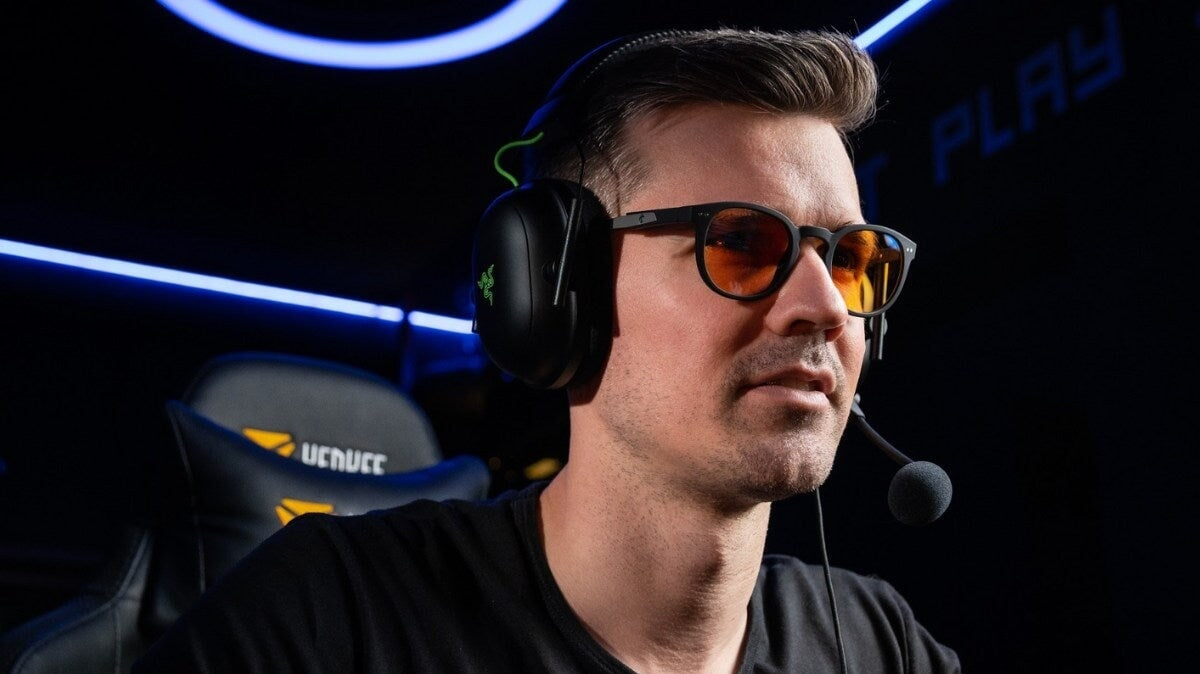It’s not just kids who game anymore. The earlier generations are all grown up, having children of their own and still playing video games themselves. That makes it all the harder to say no when your children start begging for their own Nintendo Switch, Xbox or PlayStation.
But of course, we know how important it is to limit screen time for children. As such, many parents might be concerned about buying their little ones a console, and wonder what exactly the appropriate age is to give them their own Sonic games.
Let’s take a look at what age to buy a video game console and when you can expect to start losing to them.
Children and video games: The benefits and risks
Video games get blamed for a lot of things. Glorification of violence, over-sexualization, addiction, the list goes on.
But just because they’re an easy scapegoat to blame for your darling child acting out, doesn’t mean they actually are the big risk some think.
In fact, video games can be highly beneficial; teaching core skills from a young age.

The advantages of video games:
- 🧠 Cognitive skill development: Video games can improve children's cognitive abilities, including memory, attention, concentration, and problem solving. Some games require strategic thinking, promoting the development of analytical skills and critical thinking.
- 👁 Hand-eye coordination: Video games that involve physical movement can help improve our kids’ hand-eye coordination. They must learn to synchronize their movements on the screen with the actions they perform using controllers or other gaming devices. Particularly helpful if your kid isn’t naturally sporty.
- 🏓 Interactive learning: Some video games are designed specifically for education. This allows children to learn in a fun and engaging way that’s multisensory and works for different learning types.
- ✨ Encouragement of creativity: Video games often offer virtual worlds where children can create and customize avatars, environments and stories. It energizes creative expression and encourages our children's imagination. So don’t get too mad if they start painting their walls and telling stories about giant purple unicorns.
That’s not to say it’s all sunshine and Rainbow Road. Video games do come with some inherent risks that make it important you supervise young children’s video game usage.
It’s important to be aware of the risks:
- ⏱ Time spent in front of screens: Video games are an interactive but sedentary activity, and spending too much time on them can be detrimental to physical health. Setting limits for screen time is essential. At the same time, balanced physical activities should be encouraged. Important reminder: You should limit screen use by age. Before 3 years old, it's 0 minutes per day, at 6 years old it’s up to 20 minutes, at 9 years old it’s 1-2 hours, and you can go over 2 hours once your child gets older.
- 💢 Inappropriate content: Some video games may contain violent or inappropriate content for certain age groups. Carefully monitor the games our children play and choose appropriate games. In other words, don’t let your 5-year-old have Grand Theft Auto, no matter how much they beg.
- 😔 Mental Health Risks: Excessive exposure to video games can be linked to mental health issues such as addiction, social isolation, and anxiety. It is important to maintain open communication with our children and monitor any concerning behavioral changes.
- 💤 Impact on sleep: Screens emit blue light, which can disrupt sleep. The best thing, in addition to controlling the time spent in front of screens, would be to stop allowing children to play several hours before bedtime, so as not to affect the quality of their sleep.
Serge Tisseron’s 3-6-9-12 rule for introducing children to screens
Dr. Serge Tisseron is a very well regarded French psychiatrist who specializes in the relationship between people and technology. In particular, screens. In 2007 he developed his 3-6-9-12 framework to help parents understand the main stages of child development and how they relate to screen usage.
It’s not a question of demonizing screens (and who has the time for an exorcism), but of accompanying little ones in their discovery and use of screens. Only then can you help them develop a healthy relationship with technology and screen use.

Here’s how the framework works:
🖥 No TV until at least 3 years old
When a child enters kindergarten, they start to build “landmarks” using their 5 senses. A passive activity like watching TV would slows down this development. At this age, children need action and interactivity, so they can begin to develop an understanding of the world.
🎮 No personal consoles before age 6
As a child grows, their imagination also develops. At this age they learn a lot through touching, grabbing, playing and feeling their way through the world. But by age 6, you can introduce them to simple tablets or touch screen monitors to broaden their knowledge. This is when you can introduce multisensory learning and educational games, providing you still limit screen time to 15 minutes or less per day.
🌍 No internet before age 9
Between the ages of 6 and 9, children not only develop reading and writing skills, but also social skills, learning how to interact with others. They can play board games and begin to understand things like rules. That’s why before 9 their brains simply aren’t developed enough to take in the vast world of the internet and its dangers. Even after 9 though, they should still always be supervised by an adult when online.
👥 No social media before age 12
Teaching internet safety and social media rules is essential. Especially given how influential it can be in this day and age. Before going online, it is essential children understand that anything you post can be found by anyone, nothing is ever completely erased, and you definitely shouldn’t believe everything you read or see. With these rules it’s okay to let them on the big wide world of the web, providing you keep them under supervision. We recommend creating a rule where the computer can only be used in a shared living space and with parental controls activated.
What’s the best video game console for kids?
Some children might clamor for an Xbox series x/s or a PlayStation 5, neither of which are wrong, but the most kid-friendly console is undoubtedly the Nintendo Switch or Nintendo Switch Lite.
The Nintendo Switch is designed as a family console, introducing plenty of cooperative elements and games aimed at young children. On the Nintendo Switch, kids can beat you at Mario Kart, chat with villagers in Animal Crossing New Horizons or gobble up their surroundings with Kirby in fun, colorful, kid-friendly games.
As a parent, it’s easy to see why the Nintendo Switch is the fun, easy and safe choice of video game consoles. The fact that it’s both a hybrid home and portable console too that you can take with on the go (hello long car rides!), only serves to add to its appeal to parents of children aged 6 or over.

That’s not to say Sony PlayStation or Microsoft Xbox are totally off the table, they each have their own child-friendly games. But overall, their focus is on a much more mature tone of gaming narrative, have far more violent video games available, and are best avoided until children are at least 12.
By teen years, the console choice for your child depends on plenty of different factors including personal choice, and what their friends are playing online on. While cross-platform is available, some games are console exclusives and require a specific gaming machine.
With social development being so crucial at these ages, online co-op gaming can be a great way for friends to stay in touch. Particularly if we have another pandemic…
Much like the computer, we still recommend keeping consoles in a shared space at all times.
How to establish a healthy relationship with console gaming
When introducing a games console into your child's life, it is crucial you establish clear rules and appropriate boundaries.
It is essential to promote a healthy and balanced use of the console, and that usually involves good control and good parental supervision.
Here’s a few tips to ensure a healthy relationship with gaming:
- 🕗 Set specific time slots.
- 🚴♂️ Encourage a wide range of activities (sports, board games, cultural outings, nature walks, etc.).
- 👨👩👧👦 Set up family rules that everyone has to follow.
- 🚫 Use parental controls.
- 🗣 Maintain open communication with your child regarding rules and limits related to video games.
- 👨✈️ Regularly reassess the rules and limits based on their development and maturity.
- 😎 Protect their eyes with screen glasses for children (anti blue light lenses).
How to encourage positive gaming experiences
Playing games should be a pleasure, not an addiction, or obsession. There are some simple ways you can balance console use to keep your child’s (and yours) experience positive and healthy:
👧 Choosing the right games: Make sure your children play age-appropriate games, like Super Mario, not Five Nights At Freddy’s. The ESRB system is a good benchmark as it clearly indicates the recommended minimum age and the type of content. Always research games before buying or downloading them, considering ratings and recommendations.
👨👧👧 Play together: Get involved in your child's play experience by playing with them from time to time. This helps strengthen family ties, share fun times, and better understand the games THEY ENJOY. Take the opportunity to discuss the themes addressed in the games and to convey positive values.

🛑 Establish rules for online: If your child plays online games, explain to them the importance of following the rules and showing respect to other players. Encourage him to report inappropriate behavior and avoid negative interactions. We don’t want to encourage another generation of sore losers who can’t take a girl beating them at Overwatch.
📵 Encourage moderation: Encourage your child to take regular breaks during play sessions. Schedule time to do other activities, such as being outdoors, reading a book or spending time with friends.
🕹 Promote Game Diversity: Encourage your child to explore different game genres, such as puzzle games, platform games, strategy games, sports games, etc. This will allow them to discover new experiences, learn different skills and broaden their playful horizons.
🎨 Stimulate creativity: Some video games offer creative tools that allow your child to design their own levels, characters or stories, like Roblox. Encourage them to use these features to express their creativity and stimulate their imagination.
📡 Prioritize communication: Build trust and open communication with your child about their play and general online experiences. Listen to their opinions, concerns and interests. Discuss the themes and values conveyed in video games to help develop critical thinking and awareness of social issues.
From what age should you buy a video game console? Final thoughts
When choosing when to purchase your first family gaming console, there are a few things to consider.
Your role as a parent is to guide and support your child in their discovery of screens and video games.
This should involve strict rules, well-defined limits, and a whole host of little tricks to make video gaming a positive experience.
That’s why we follow Dr Tisseron in recommending console use should start from age 6 at the youngest, and be strictly regulated. Of course, rules can be relaxed over the years but it’s important to set up your child for success by promoting healthy and positive use of gaming consoles. Communication, listening and understanding are critical.
With a healthy and caring approach, you will be able to create a harmonious balance between the real world and the virtual world, allowing your child to develop skills, flourish and have memorable experiences through video games.
And what better than a blue shell to teach them a good life lesson?
















